Economy

Steel Product Shipments and Inventories Through January
Written by David Schollaert
March 22, 2021
Steel product shipments continued to improve through January this year, maintaining a month-on-month growth trend since bottoming in April 2020 when COVID shook the economy. Steel shipments have recovered to pre-pandemic volumes and posted an increase of 2.7% compared to January 2020 levels, according to Census Bureau data on inventories, shipments and new orders for total U.S. manufacturing and steel products.
Total shipments and inventories are reported in millions of dollars, seasonally adjusted. Year over year through January, total manufactured product shipments rose to a positive 7.8% compared with a positive 5.0% the month prior. This past December was the first positive for manufactured goods in 2020, with January’s totals a promising start to 2021.
Steel product shipments were up from positive 2.8% in December to a positive 6.4% in January, month on month. Figure 1 and Figure 2 show the history of both since 2005. During the first wave of the global pandemic last April, total manufacturing shipments plunged by 19.4% and steel product shipments fell by 21.4% compared with the prior year. Both have steadily recovered since, driving optimism for 2021.
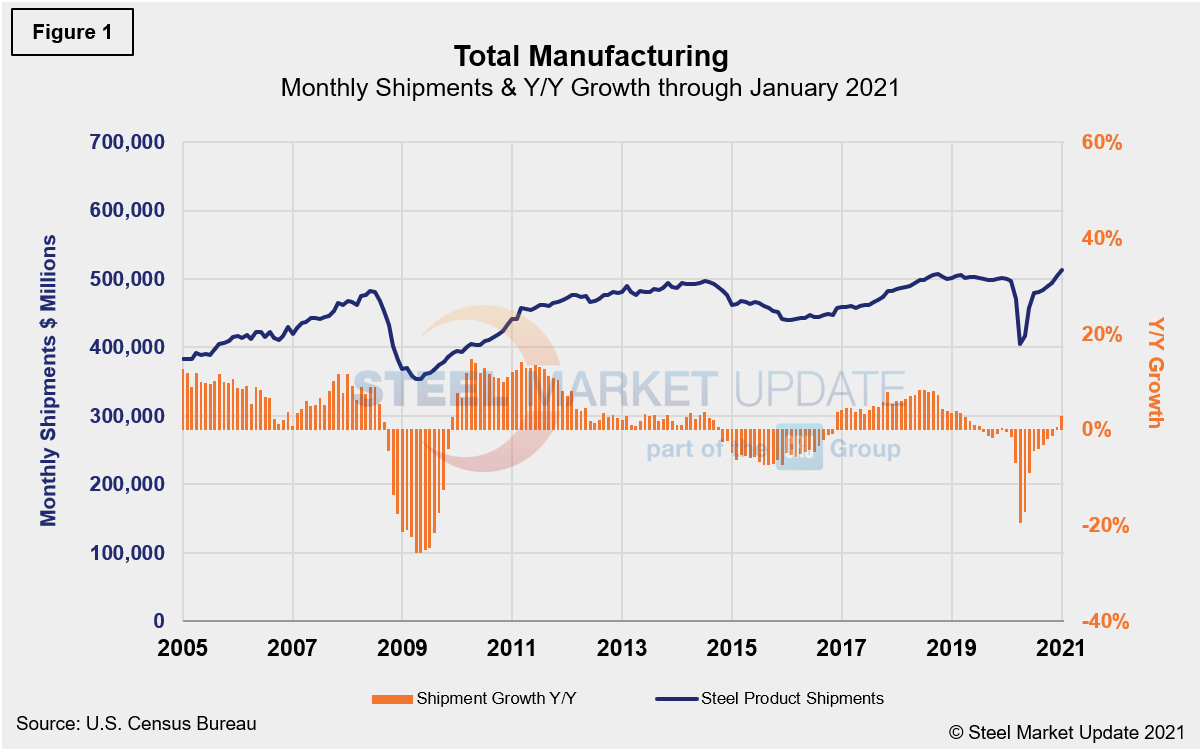
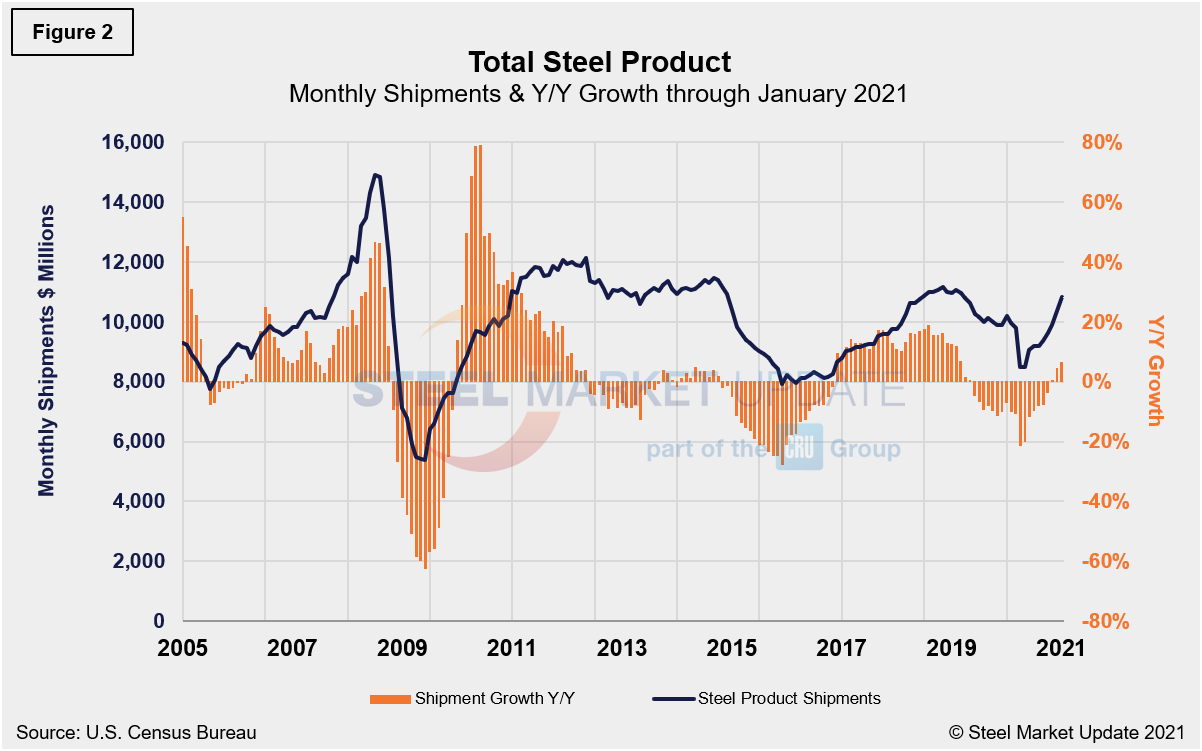
Monthly steel product shipments in millions of dollars with the year-over-year growth through January are detailed in Figure 2. Shipments of steel products totaled $10.8 billion in January, up from year-ago levels when shipments were $10.2 billion. Shipments of steel products most recently peaked in November 2018 at $11.2 billion, then began a 17-month decline through April 2020. Although the growth rate has declined from 18.6% in August 2018 to just 6.4% through January, shipments of steel products are up 27.8% since reaching bottom this past April.
The Census data in Figure 2 compares well over the long term with the American Iron and Steel Institute weekly crude steel production shown in Figure 3. Figure 2 is in dollars and Figure 3 is in tons, yet they paint a similar picture. Since the freefall from the first wave of the pandemic that came to an end in late May 2020, steel production has been on the rebound, according AISI data shown on a four-week moving average basis. Crude steel production was up 1.6% in the week ending March 13 year over year.
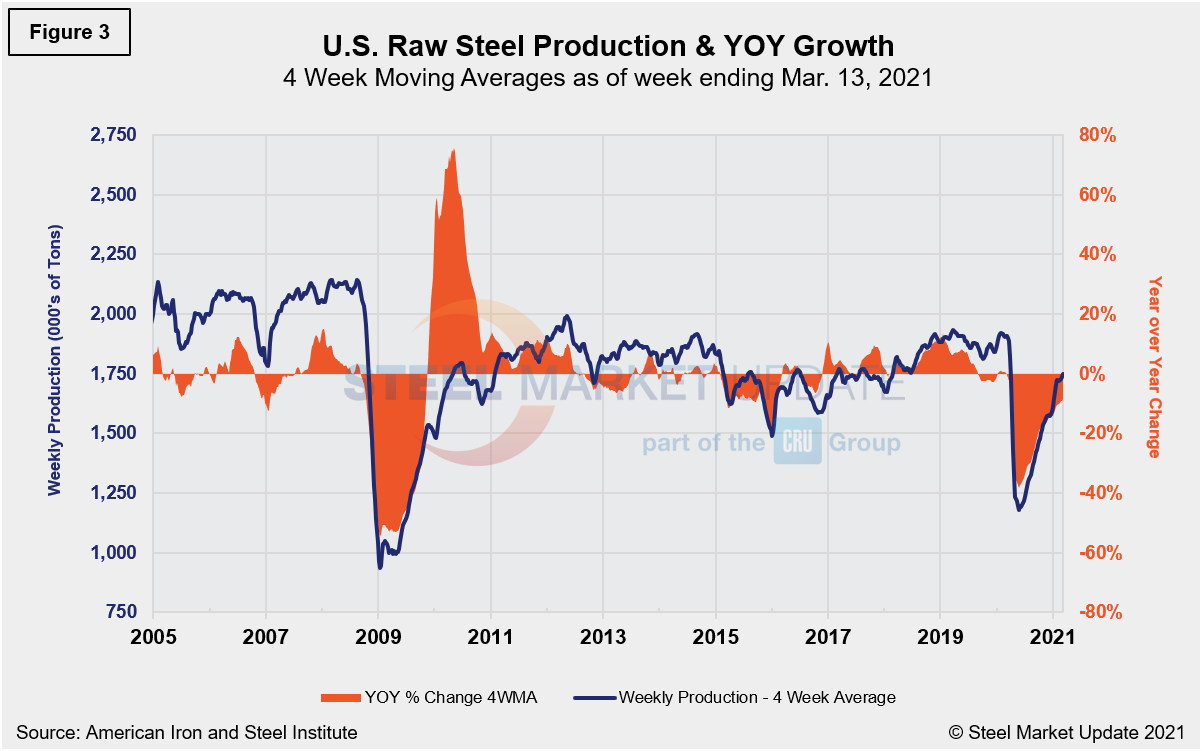
Steel product shipments and new orders on a monthly basis since 2010 are shown in Figure 4. New orders declined much more than shipments last April, but were back in balance by June and have now exceeded shipments. There has been a slight curtailment in new orders compared to shipments since November when steel prices began their record high move. The uptrend and tighter gap between new orders and shipments reflects the continued growth in steel demand.
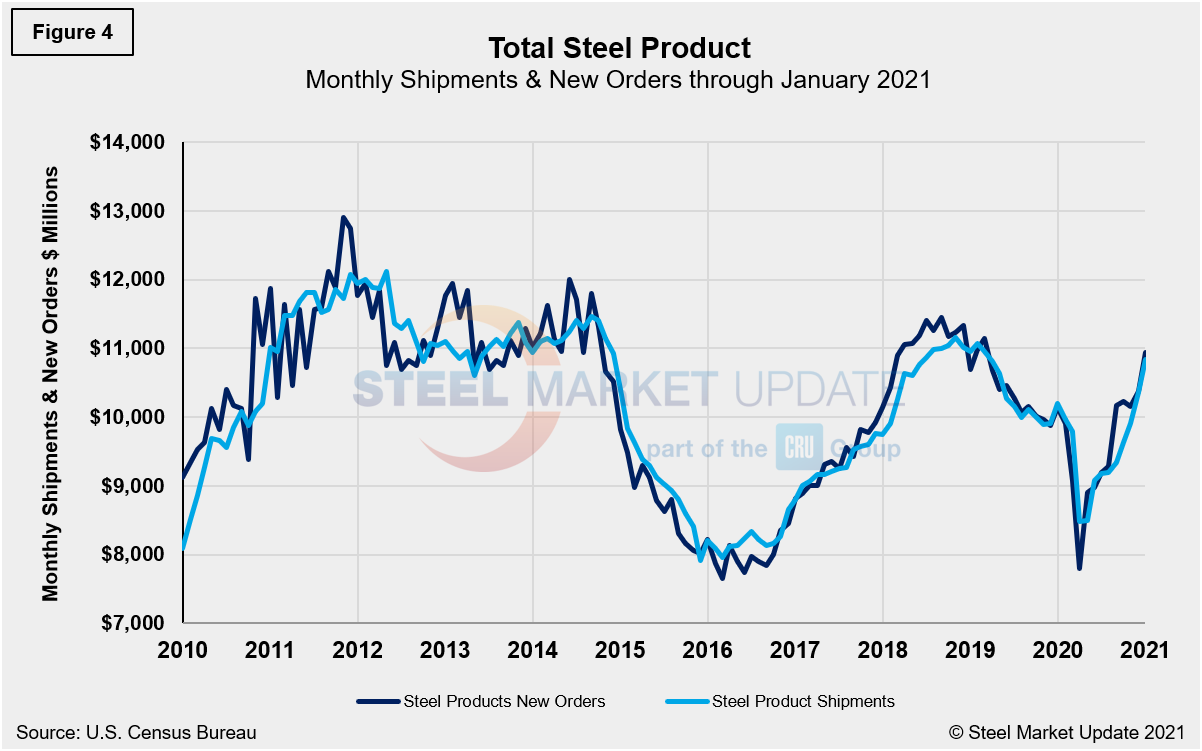
The same total shipment line as in Figure 2 is shown below in Figure 5, but now includes the inventory-to-shipment (IS) ratio. The IS ratio shot up in April to 2.34% but came tumbling down, and has since declined below to its lowest mark since January 2011. Presently, the IS ratio is at 1.70% through January. The IS ratio is a measure of how much inventory is necessary to support the level of shipments, thus the lower the IS ratio the better. Shipments have improved by nearly 27.8% since May 2020. Total inventory in millions of dollars is displayed in Figure 6 and repeats the inventory-to-shipment ratio shown in Figure 5.
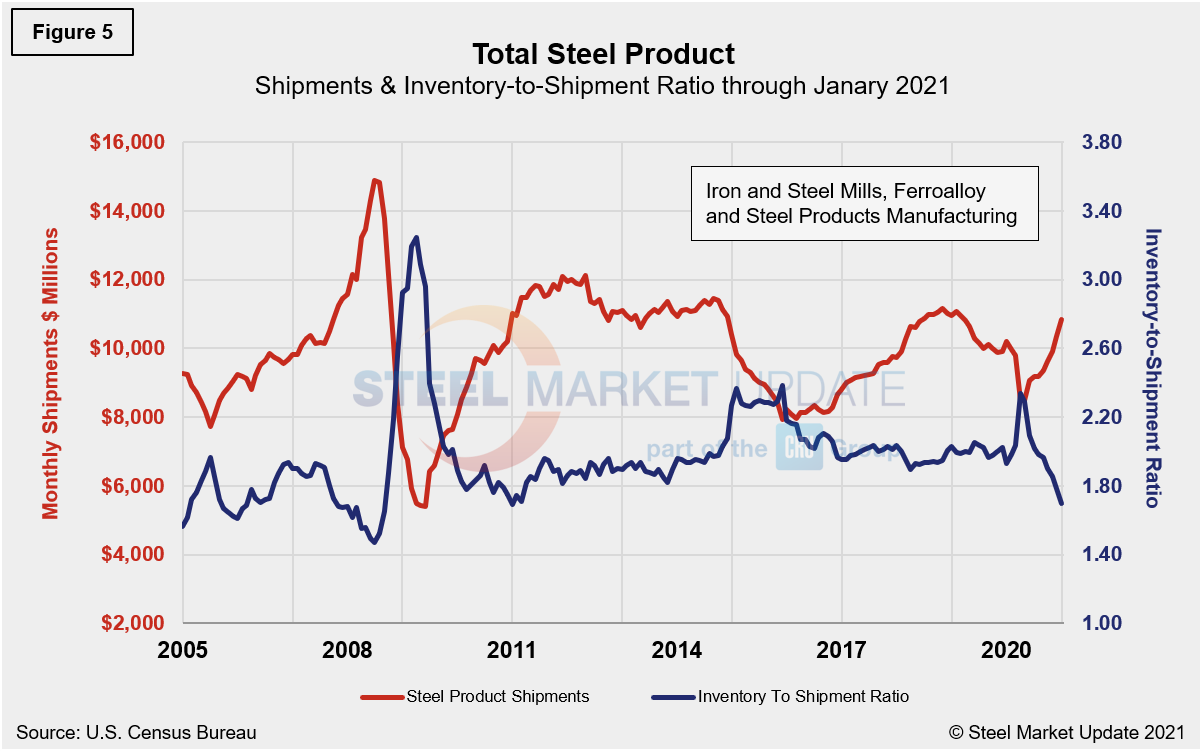
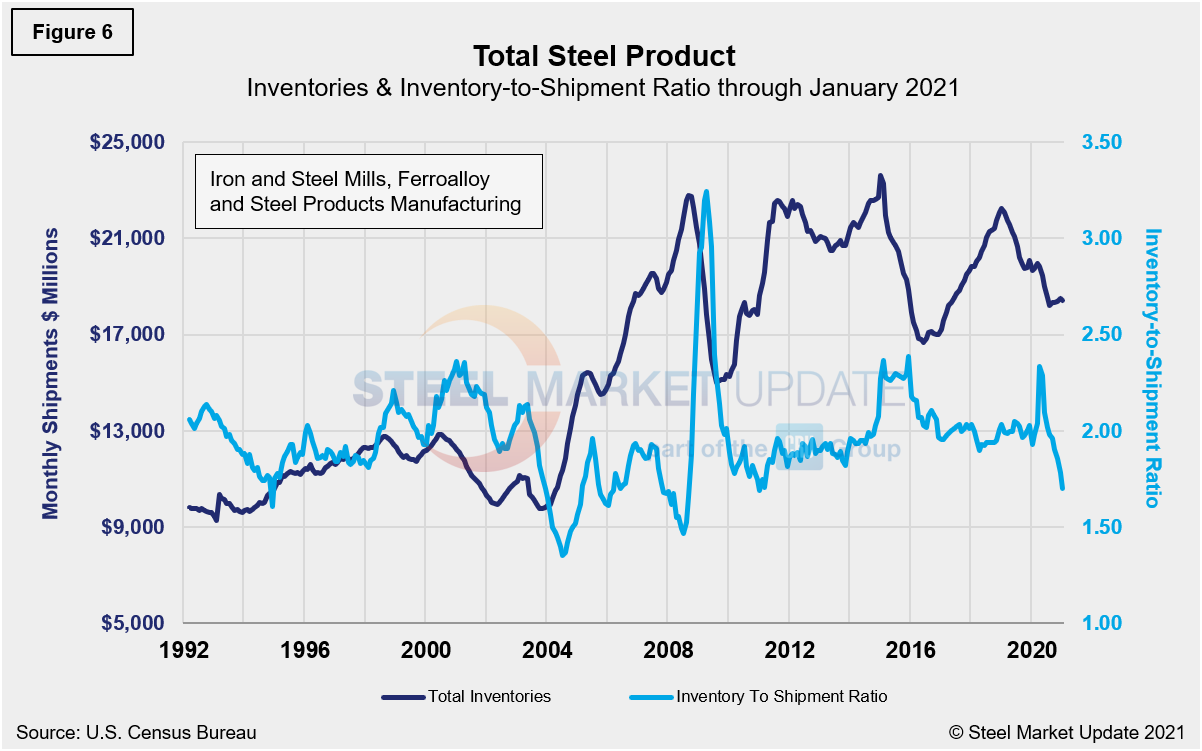
SMU Comment: Data from the Census Bureau for steel product orders, shipments and inventories clearly shows a steel industry returning to health following the crippling effects of the 2020 pandemics. Steel product shipments were hit harder than total manufacturing in April and May, but have outpaced manufacturing in their rebound. The marketplace isn’t out of the woods yet, however. Rising steel product orders and decreased inventories corollate directly with the tight availability and extended lead times that are currently frustrating steel buyers.
By David Schollaert, David@SteelMarketUpdate.com

David Schollaert
Read more from David SchollaertLatest in Economy

Steel groups welcome passage of budget bill
Steel trade groups praised the passage of the Big Beautiful Bill (BBB) in Congress on Thursday.

Industry groups praise Senate for passing tax and budget bill
The Steel Manufacturers Association and the American Iron and Steel Institute applauded the tax provisions included in the Senate's tax and budget reconciliation bill.

Chicago PMI dips 0.1 points in June
The Chicago Purchasing Managers Index (PMI) slipped 0.1 points to 40.4 points, in June.

Multi-family pullback drives housing starts to 5-year low in May
US housing starts tumbled in May to a five-year low, according to figures recently released by the US Census Bureau.

Architecture firms still struggling, ABI data shows
Architecture firms reported a modest improvement in billings through May, yet business conditions remained soft, according to the latest Architecture Billings Index (ABI) release from the American Institute of Architects (AIA) and Deltek.
